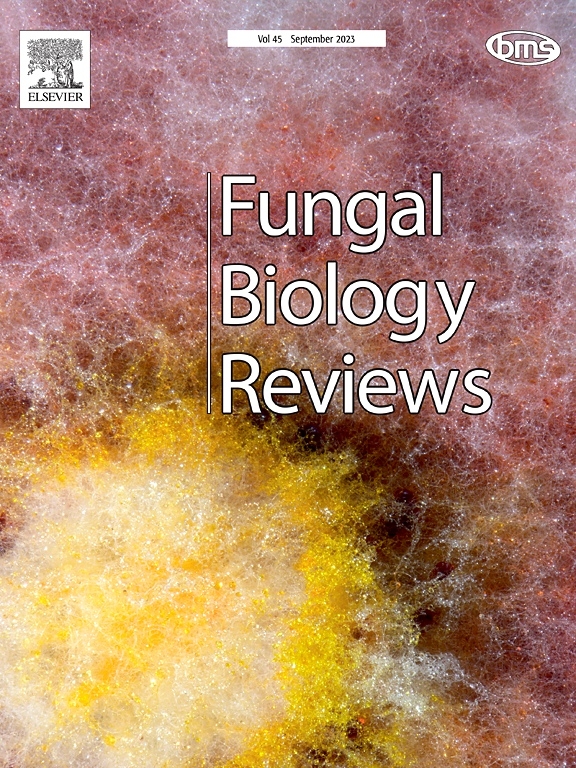解读白色念珠菌的氧化应激反应
IF 4.6
2区 生物学
Q1 MYCOLOGY
引用次数: 0
摘要
念珠菌是侵袭性真菌感染的主要原因,白色念珠菌是最常见的一种。因此,世界卫生组织已将白色念珠菌列入其真菌优先病原体名单。感染后,吞噬细胞(主要是巨噬细胞)引发呼吸破裂,产生氧化化合物,如过氧化氢。作为回应,白色念珠菌激活强大的氧化应激反应,催化免疫系统产生的氧化分子,并在细胞内抵消其氧化作用。白色念珠菌的氧化应激反应暗示了蛋白质组学的变化,无论是在丰度上还是在翻译后修饰上,这些变化尚未得到充分的描述。具有直接抗氧化特性的蛋白质、MAPK信号通路和转录因子参与了这一反应。本文就这些因素在白色念珠菌中的作用及其相互作用作一综述。许多这些机制作为有利于侵袭性念珠菌病的毒力特征,可以作为抗真菌药物的潜在靶点。本文章由计算机程序翻译,如有差异,请以英文原文为准。
Deciphering the oxidative stress response in Candida albicans
Candida species are the leading cause of invasive fungal infections, with Candida albicans being the most common one. Consequently, the World Health Organization has included C. albicans in its fungal priority pathogens list. Following infection, phagocytes (mostly macrophages) initiate a respiratory burst, producing oxidant compounds, such as hydrogen peroxide. In response, C. albicans activates a robust oxidative stress response to catalyze the oxidant molecules produced by the immune system and counteract their oxidative effects within the cell. The oxidative stress response of C. albicans implies proteomic changes, both in abundance and in post-translational modifications, that are not fully described yet. Proteins with immediate antioxidant properties, the MAPK signaling pathways, and transcription factors are involved in the response. In this review, we discuss the role of these factors and the interactions among them in C. albicans. Many of these mechanisms act as virulence traits that favor the invasive candidiasis and can be used as potential targets for antifungal drugs.
求助全文
通过发布文献求助,成功后即可免费获取论文全文。
去求助
来源期刊

Fungal Biology Reviews
MYCOLOGY-
CiteScore
10.60
自引率
0.00%
发文量
36
期刊介绍:
Fungal Biology Reviews is an international reviews journal, owned by the British Mycological Society. Its objective is to provide a forum for high quality review articles within fungal biology. It covers all fields of fungal biology, whether fundamental or applied, including fungal diversity, ecology, evolution, physiology and ecophysiology, biochemistry, genetics and molecular biology, cell biology, interactions (symbiosis, pathogenesis etc), environmental aspects, biotechnology and taxonomy. It considers aspects of all organisms historically or recently recognized as fungi, including lichen-fungi, microsporidia, oomycetes, slime moulds, stramenopiles, and yeasts.
 求助内容:
求助内容: 应助结果提醒方式:
应助结果提醒方式:


